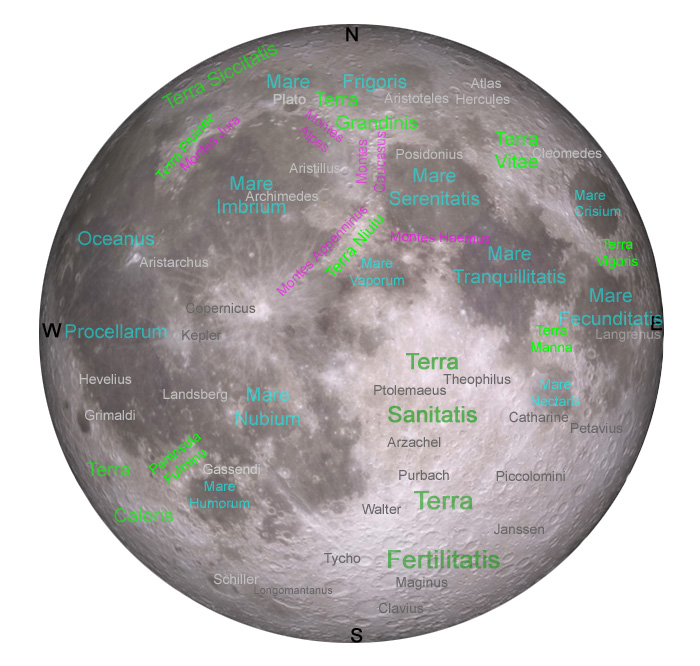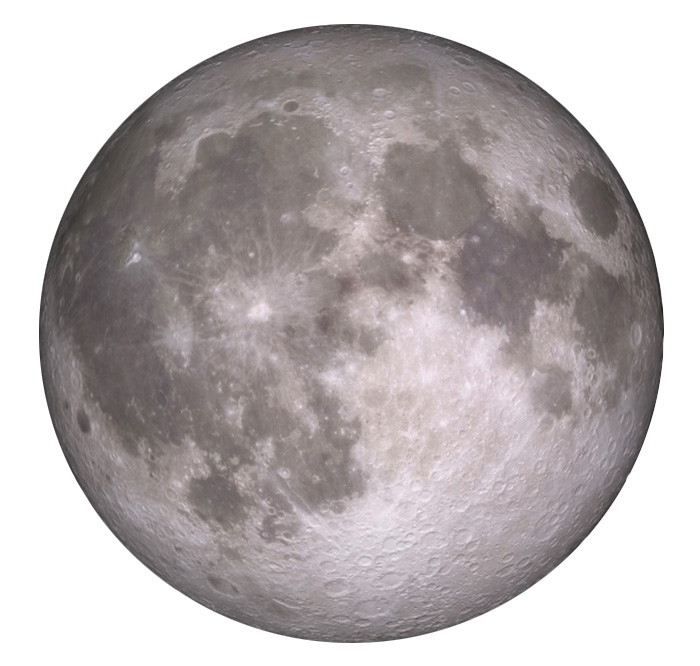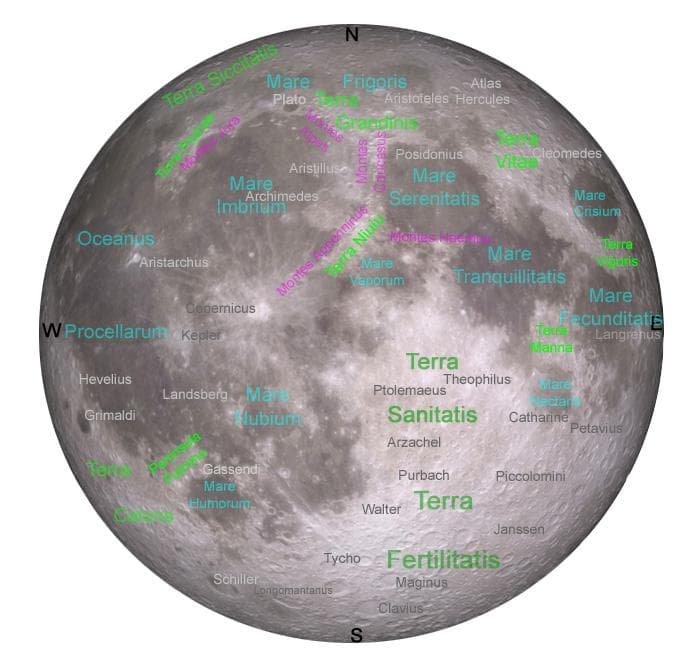Free, complete Full Moon guide
To go back to the previous page that lists these individual lunar features, click here.
Download the free 50 FEATURES color coded guide to the Full Moon here. Set printer to "Highest Quality" in order to retain the maximum visibility of features.
Below is a graphic version of the free, PDF guide to the Full Moon, showing all major features of the Moon. Labelled are the following highlights to viewing the lunar surface:
- Lunar Maria (labelled in blue)
- Lunar Highlands (labelled in green)
- Craters (labelled in grey)
- Mountain ranges (labelled in purple)
Each feature is color coded for ease of identification. Binoculars will show the vast majority of these features listed - try using 7x35, 8x40 or 7x50 binoculars for the best views, though the brightness of the Moon means it may be possible to see more features with smaller models or higher magnifications.

Compare the above map to the unlabeled Full Moon guide, below:

A good place to start is identifying the darker maria regions. These are the areas visible easily with most binoculars, and especially small telescopes. If you wish, you can then move to the lunar highlands.
Many of the craters and mountain ranges are best views when the terminator (the edge of the shadow along the lit / unlit sections of the Moon when not at full phase) is nearby. Try to look for those features when they are on the sunlit side of the terminator, but not fully awash in light yet. There is an amazing three-dimensional effect that really makes those features "pop!" and not look so flat or uninteresting as many other solar system objects can.
Even low mountains appear enormously high, and somewhat shallow craters can look incredibly deep due to the long shadows created by the low angle of the Sun when the they are just inside that terminator region.
See what you can find and identify! There is no rush - go at your own pace. Soon you'll start to remember areas, and go back to them easily, while learning new ones. Don't let the Moon stop you from observing, as it does many amateur astronomers. Use it as an opportunity to get to know the closest celestial body to Earth.
You won't get any better, more detailed views than those of our Moon!

